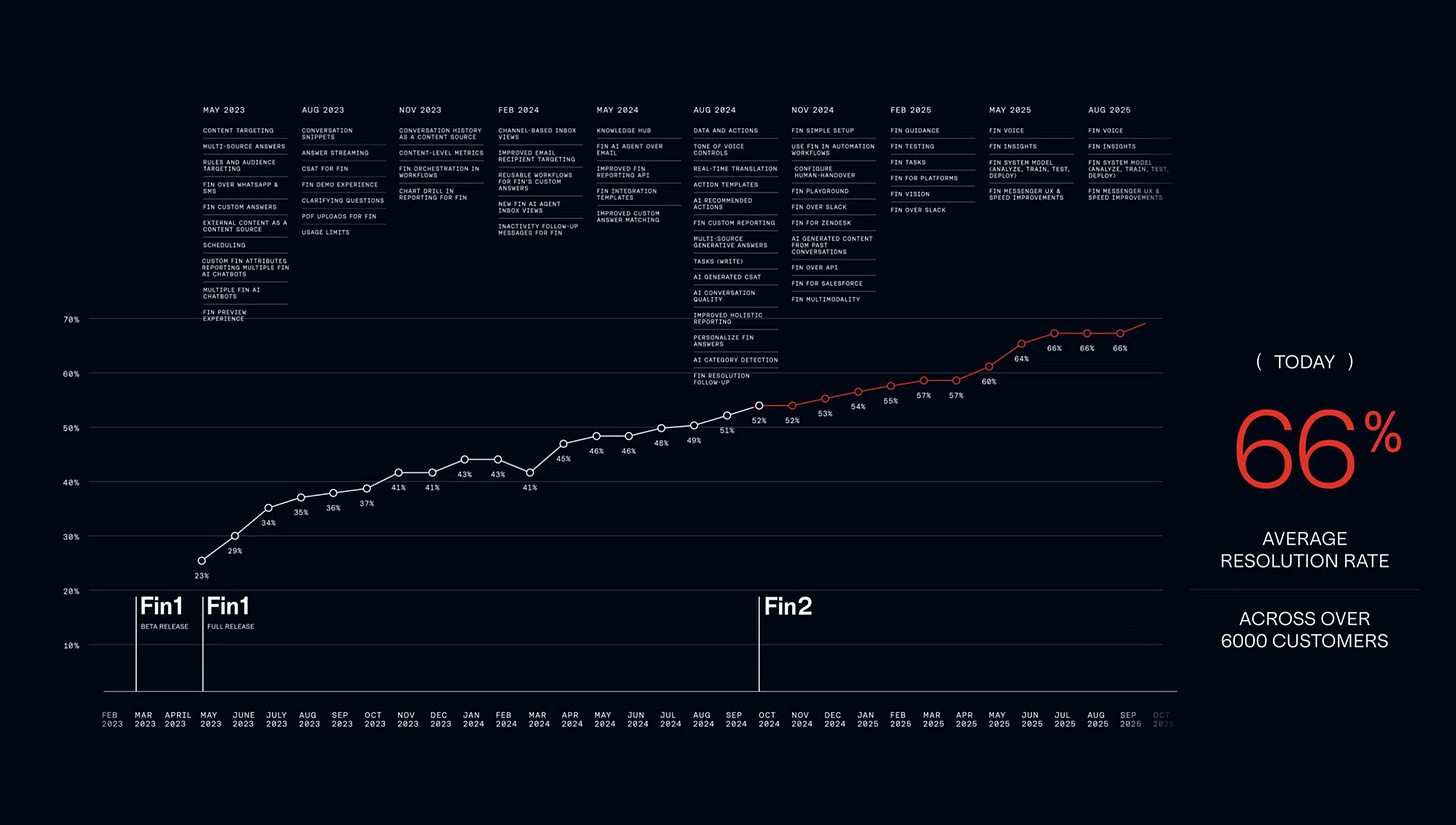Continuing my series on this month’s event takeaways, I turn to Intercom’s Pioneer and the insights shared around Fin.
Intercom is far from a new market entrant. Founded in 2011 as an in-app messaging tool, it rapidly evolved into a comprehensive, messaging-first customer communication suite. Together with Drift, it became the poster child of proactive, message-based customer support and engagement. Drift claimed the sales and marketing corner, while Intercom secured customer service and support.
Fueled by $240M in funding, Intercom emerged from COVID with over $200M in ARR but soon encountered headwinds—partly from post-COVID market adjustments, and partly because its expanding suite added complexity just as messaging became table stakes across customer service solutions
Against this backdrop, Intercom seized the GenAI moment, establishing a dedicated team and launching Fin as an AI customer service bot with its own branding and website—capable of running on Intercom, Zendesk, or Salesforce, and offered on a per-resolution pricing model.
Today, Fin has 6,000 customers and is rumored to have reached $100M in ARR. The launch of its third iteration demonstrates the incredible speed of innovation we currently enjoy in AI-powered customer service.
Fin1 started with a 23% resolution rate across all customers, rising to 52%, while Fin2 pushed it further to 66%. These figures reflect Fin’s entire customer base and underscore the remarkable pace of progress in the industry.
Fin has been transitioning from a product into a full-fledged system built on three layers: Applications, AI, and Model. The AI layer orchestrates Retrieval-Augmented Generation (RAG), context, guidance, and policies—in a way that Intercom positions as central to Fin’s differentiation. The Model layer mediates access to multiple AI models, combining general-purpose LLMs from providers like OpenAI and Anthropic with custom models purpose-built for customer service. Intercom has invested heavily here, introducing five proprietary models just weeks ago and emphasizing its ability to dynamically match the optimal model to each task as a key performance driver.
Intercom used the event to unveil Fin3, the third iteration of its system, introducing three major capabilities. First, it expanded channel support, adding Slack and Discord, and made major improvements to voice. Second, it introduced Simulations for testing and validation. Third, it launched Procedures to push the boundaries of what the system can handle, letting you combine NLP instructions, deterministic controls (via data connectors, branching logic, and code), Agentic behavior (reasoning), and AI assistance to tackle complex queries that may require specific, deterministic steps.
Like its peers, Intercom recognizes the challenges of adoption and introduced an AI Agent Blueprint, a strategic framework to guide customer service leaders through deploying and scaling the system. It builds on five core CX principles: managing experience as a product (design, test, iterate), making human access effortless, shifting from reactive to proactive support, ensuring response consistency, and aligning every interaction with the brand voice and policy. Discussions with customers underscore the need to evolve service roles alongside the system and to treat knowledge as core infrastructure.
With Fin, Intercom has secured its place in a crowded market, becoming a platform to watch for anyone tracking the future of conversational AI for customer support.
Recording: here




